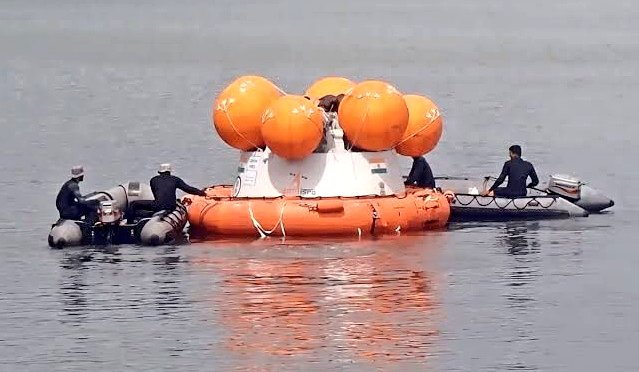The Indian Space Research Organization (ISRO) successfully tested the crew escape system of the Gaganyaan mission on Saturday. It was launched from the Satish Dhawan Space Centre in Sriharikota at 10 a.m. The test vehicle was named the “Test Vehicle Abort Mission-1 (TV-D1).”
This mission lasted for 8.8 minutes. After reaching an altitude of 17 kilometers, the crew module was safely brought down to the Bay of Bengal, 10 kilometers away from the Satish Dhawan Space Center. The purpose of this test was to check the system’s ability to safely return an astronaut to Earth in case of a rocket failure.
The test flight had three components: a single-stage liquid rocket developed for the abort mission, the crew module, and the crew escape system. The development engine was modified to create this rocket. The environment inside the crew module during this test was not exactly the same as it will be during the main mission.
Earlier today, the mission had been delayed twice. It was initially scheduled for launch at 8 a.m., but due to unfavorable weather conditions, the launch time was pushed to 8:45 a.m. However, just 5 seconds before the launch, the engine did not ignite, and the mission was postponed. ISRO quickly resolved the issue and proceeded with the successful launch.
